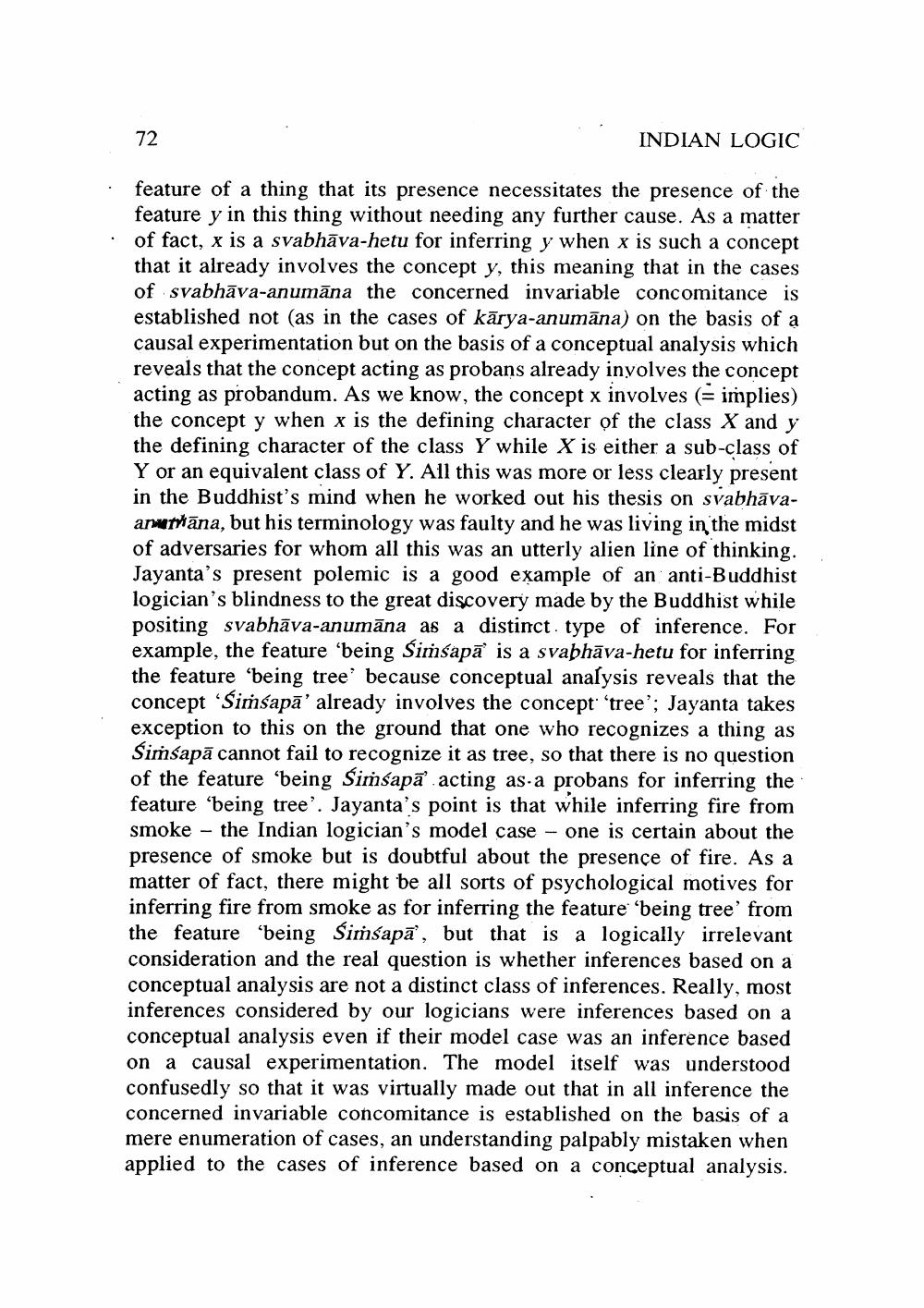________________
72
INDIAN LOGIC
feature of a thing that its presence necessitates the presence of the feature y in this thing without needing any further cause. As a matter of fact, x is a svabhāva-hetu for inferring y when x is such a concept that it already involves the concept y, this meaning that in the cases of svabhāva-anumāna the concerned invariable concomitance is established not (as in the cases of kārya-anumāna) on the basis of a causal experimentation but on the basis of a conceptual analysis which reveals that the concept acting as probans already involves the concept acting as probandum. As we know, the concept x involves (= implies) the concept y when x is the defining character of the class X and y the defining character of the class Y while X is either a sub-class of Y or an equivalent class of Y. All this was more or less clearly present in the Buddhist's mind when he worked out his thesis on svabhāvaarmathāna, but his terminology was faulty and he was living in the midst of adversaries for whom all this was an utterly alien line of thinking. Jayanta's present polemic is a good example of an anti-Buddhist logician's blindness to the great discovery made by the Buddhist while positing svabhāva-anumāna as a distinct type of inference. For example, the feature 'being Simšapā is a svabhāva-hetu for inferring the feature 'being tree because conceptual analysis reveals that the concept ‘Simšapā' already involves the concept 'tree'; Jayanta takes exception to this on the ground that one who recognizes a thing as Simšapā cannot fail to recognize it as tree, so that there is no question of the feature 'being Simšapā' acting as a probans for inferring the feature being tree'. Jayanta's point is that while inferring fire from smoke - the Indian logician's model case - one is certain about the presence of smoke but is doubtful about the presence of fire. As a matter of fact, there might be all sorts of psychological motives for inferring fire from smoke as for inferring the feature being tree' from the feature being Simšapā', but that is a logically irrelevant consideration and the real question is whether inferences based on a conceptual analysis are not a distinct class of inferences. Really, most inferences considered by our logicians were inferences based on a conceptual analysis even if their model case was an inference based on a causal experimentation. The model itself was understood confusedly so that it was virtually made out that in all inference the concerned in variable concomitance is established on the basis of a mere enumeration of cases, an understanding palpably mistaken when applied to the cases of inference based on a conceptual analysis.




